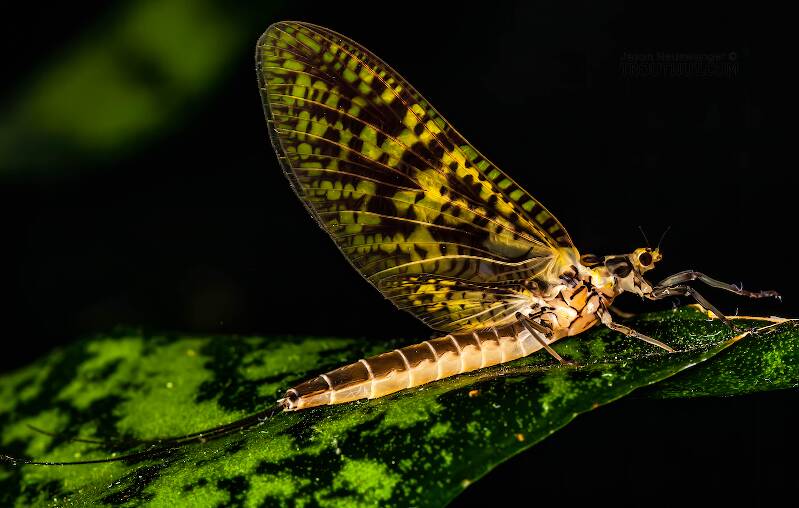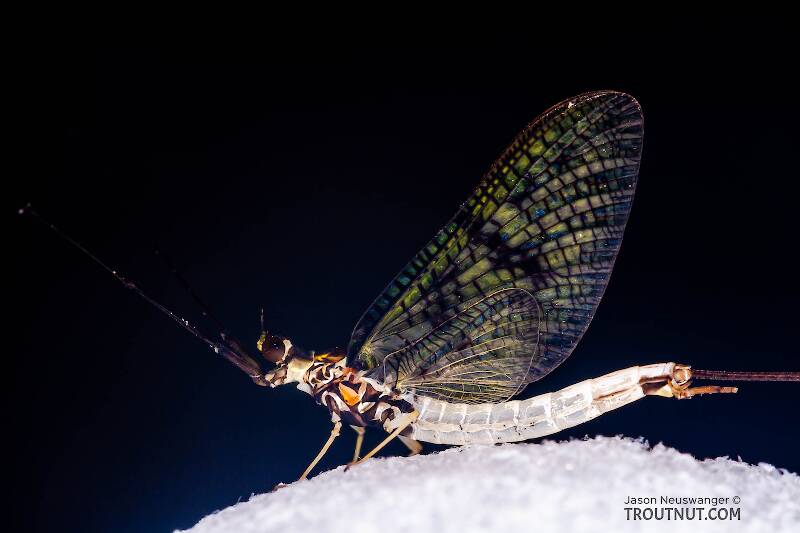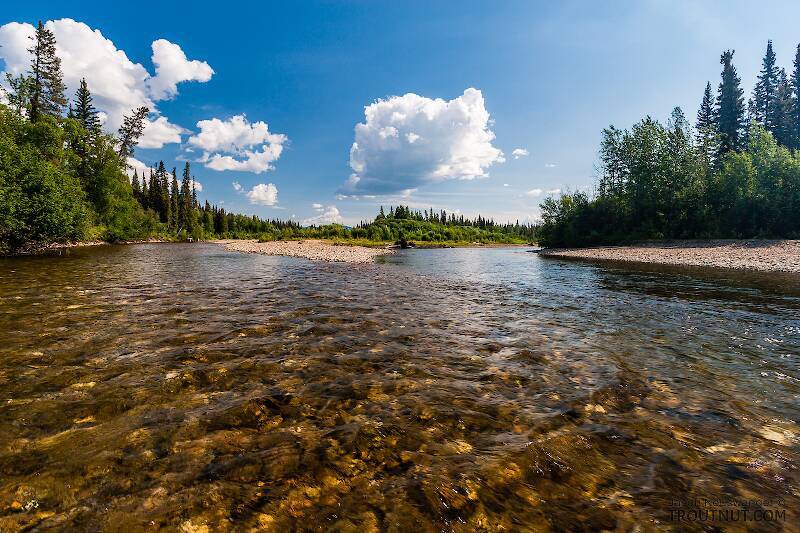
Blue-winged Olives
Baetis
Tiny Baetis mayflies are perhaps the most commonly encountered and imitated by anglers on all American trout streams due to their great abundance, widespread distribution, and trout-friendly emergence habits.
Featured on the forum

Nymphs of this species were fairly common in late-winter kick net samples from the upper Yakima River. Although I could not find a key to species of Zapada nymphs, a revision of the Nemouridae family by Baumann (1975) includes the following helpful sentence: "2 cervical gills on each side of midline, 1 arising inside and 1 outside of lateral cervical sclerites, usually single and elongate, sometimes constricted but with 3 or 4 branches arising beyond gill base in Zapada cinctipes." This specimen clearly has the branches and is within the range of that species.

Troutnut is a project started in 2003 by salmonid ecologist Jason "Troutnut" Neuswanger to help anglers and
fly tyers unabashedly embrace the entomological side of the sport. Learn more about Troutnut or
support the project for an enhanced experience here.
Green Mays
This common name refers to only one species. Click its scientific name to learn more.
Mayfly Species Ephemera guttulata
These are very rarely called Green Mays.
Ephemera guttulata's size, numbers, and hatching characteristics have made it a favorite of fly fishermen since the sport first came to North American waters.
It is on par with the Midwest's Hexagenia limbata hatch for its ability to lure huge piscivorous brown trout to eat insects at the surface once a year. The special charm of the Green Drake hatch is that it often takes place during pleasant spring afternoons. It can be challenging because the large flies are easy for trout to inspect in the daylight and they feed very selectively, especially late in the hatch. The huge difference in appearance between green drake duns and the spinners, white-bodied "coffin flies," makes them a peculiarity among major hatches.
The Green Drakes are on the decline due to environmental degradation.
It is on par with the Midwest's Hexagenia limbata hatch for its ability to lure huge piscivorous brown trout to eat insects at the surface once a year. The special charm of the Green Drake hatch is that it often takes place during pleasant spring afternoons. It can be challenging because the large flies are easy for trout to inspect in the daylight and they feed very selectively, especially late in the hatch. The huge difference in appearance between green drake duns and the spinners, white-bodied "coffin flies," makes them a peculiarity among major hatches.
The Green Drakes are on the decline due to environmental degradation.

For years after I started this website, I was eagerly hoping to find a green drake to add to the collection, but I was never in the right part of the world at the right time. It finally happened on June 1st, 2007.

This spinner was the only member of its species I saw all night during an incredibly thick and tricky mixed hatch on Penn's Creek a few days before the real start of its famous green drake hatch.
See 1 more specimen...
References
- Baumann, Richard W. 1975. Revision of the Stonefly Family Nemouridae (plecoptera) : a Study Of The World Fauna At The Generic Level. Smithsonian Contributions to Zoology undef(211): 1-74.

